Results
-
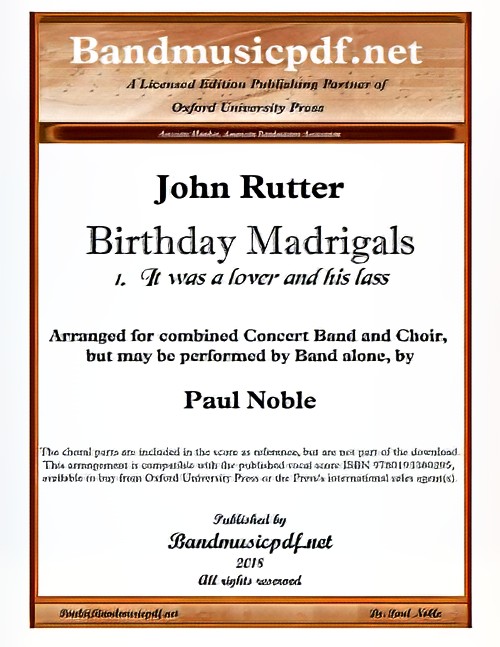 £90.00
£90.00It was a Lover and his Lass (from Birthday Madrigals) (Concert Band with Optional Choir - Score and Parts) - Rutter, John - Noble, Paul
Birthday Madrigals was written in 1995 to celebrate the seventy-fifth birthday of the great jazz pianist, George Shearing. This arrangement is written for combined band and choir, but may be performed by band alone. In honour of George Shearing's noted style, a vibes part has been added to this arrangement, as well as an optional piano part. The original setting was a suite of five movements. The arranger has chosen three of the movements, numbers 1, 3 and 5, because of their similarity in style. This is a special opportunity for Concert Bands, or combined Concert Bands and Choirs, to perform in a true jazz medium, featuring a set drummer and string bass along with the full band.
Estimated dispatch 7-14 working days
-
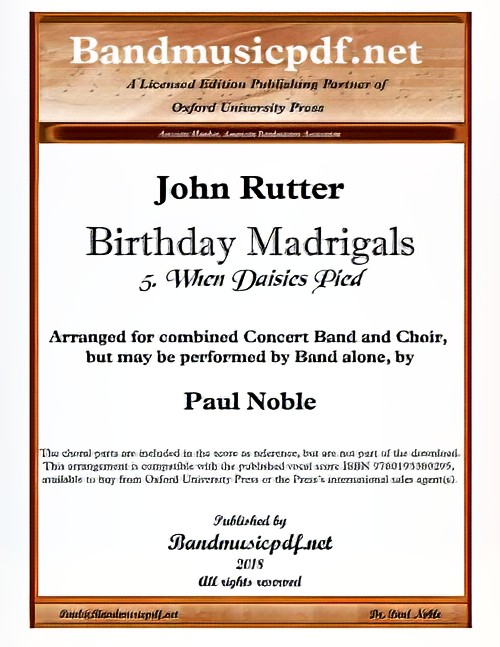 £90.00
£90.00When Daisies Pied (from Birthday Madrigals) (Concert Band with Optional Choir - Score and Parts) - Rutter, John - Noble, Paul
Birthday Madrigals was written in 1995 to celebrate the seventy-fifth birthday of the great jazz pianist, George Shearing. This arrangement is written for combined band and choir, but may be performed by band alone. In honour of George Shearing's noted style, a vibes part has been added to this arrangement, as well as an optional piano part. The original setting was a suite of five movements. The arranger has chosen three of the movements, numbers 1, 3 and 5, because of their similarity in style. This is a special opportunity for Concert Bands, or combined Concert Bands and Choirs, to perform in a true jazz medium, featuring a set drummer and string bass along with the full band.
Estimated dispatch 7-14 working days
-
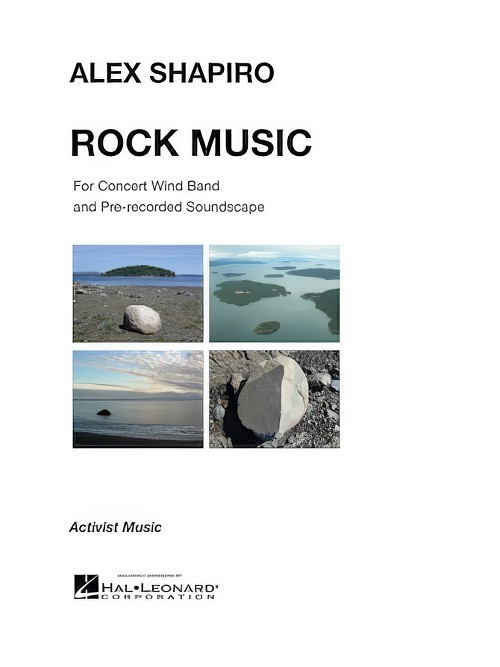 £76.99
£76.99Rock Music (Concert Band - Score and Parts) - Shapiro, Alex
For Concert Wind Band and Pre-Recorded Soundscapes.Alex Shapiro first brought electroacoustic music - paired with using an everyday object as an instrument - to middle school bands with her 2010 piece, PAPER CUT. Now comes ROCK MUSIC, possibly the very first geo-electroacoustic minimalist band piece, largely devoid of melody, and of rhythm. Conceptual and atmospheric, the music features compelling textures from instruments, voices, and rocks that weave a wind band into a piece of sonic fabric stretched across linear time. As the notes slowly crawl, melt, and scrape over a sonic landscape in random, irregular ways, we're connected to the ancient glaciers which carved the world we know, and which we strive to protect. Like PAPER CUT, ROCK MUSIC can be equally appreciated by mature bands and their audiences, as well. To perform ROCK MUSIC, you'll need an audio system capable of playing the prerecorded audio tracks from a laptop computer via a small digital audio interface connected to an audio mixer. Download information is provided in the printed piece.Duration: 4:15
Estimated dispatch 7-14 working days
-
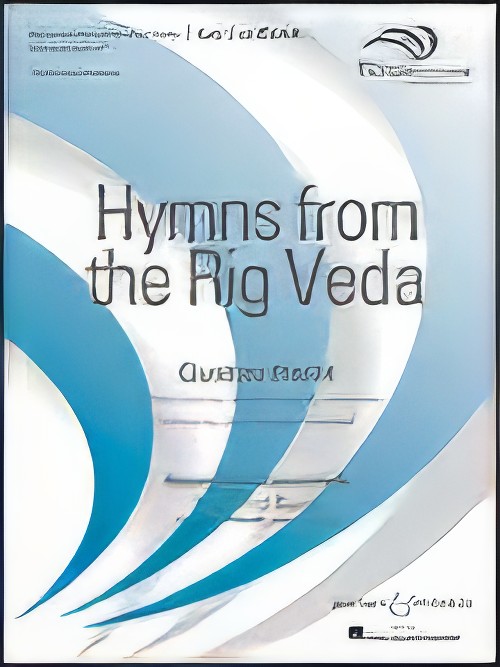 £85.00
£85.00Hymns from the Rig Veda (Windependence Concert Band - Score and Parts) - Holst, Gustav - Mitchell, Jon
A century ago, James Causley Windram, then band director of the 5th Northumberland Fusiliers (and later the Coldstream Guards) asked Gustav Holst if he would transcribe some of the composer's Hymns from the Rig Veda for military band. Always a band advocate, Holst readily agreed. In this thoroughly characteristic suite, two of Windram's settings (Hymn of the Travellers and Battle Hymn) have been edited for modern instrumentation, while a third (Hymn to Manas) has been arranged by Jon Ceander Mitchell from Holst's original choral setting.
Estimated dispatch 7-14 working days
-
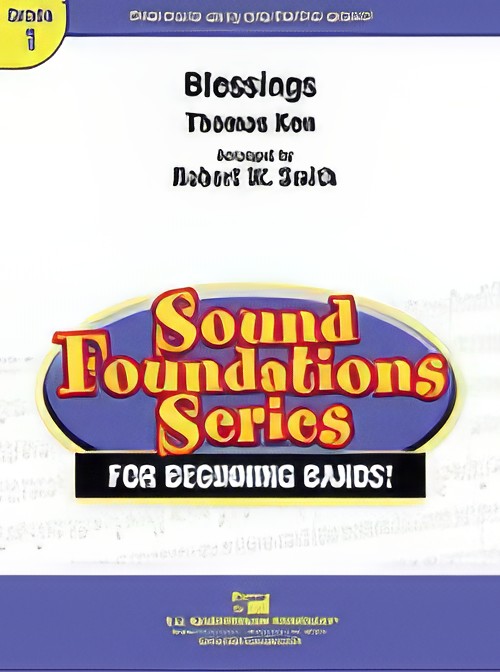 £45.00
£45.00Blessings (Concert Band - Score and Parts) - Ken, Thomas - Smith, Robert W.
Based on the liturgical hymn "The Doxology" written in 1674 by Thomas Ken, this lyrical and sensitive arrangement for the beginning band provides multiple teaching opportunities in a rich musical setting. The first melodic statement is written as a musical exchange between soloists or sections creating a connection and awareness between sections of the band. The second melodic statement is a lush full ensemble setting in contrast. The use of mixed meter in an accessible and musically logical manner reinforces teaching and concepts introduced in the first year of most beginning band methods. A beautiful and educational choice for your concert program! Duration: 2.00
Estimated dispatch 7-14 working days
-
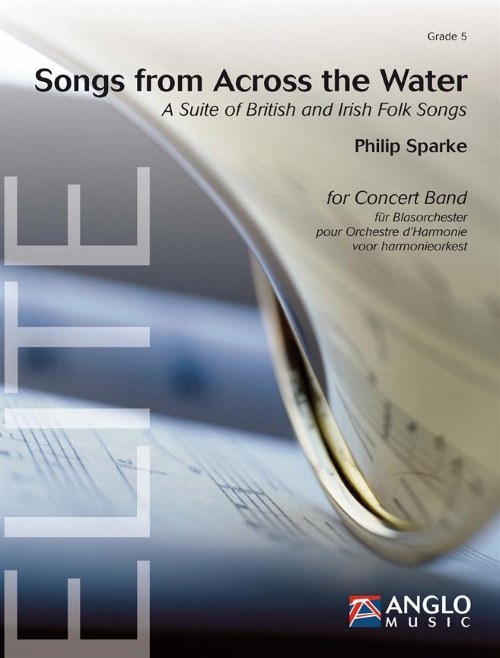 £152.99
£152.99Songs from Across the Water (Concert Band - Score and Parts) - Sparke, Philip
A Suite of British and Irish Folk Songs. Songs from Across the Water was commissioned by Pennsylvania Symphonic Winds - Phil Evans, Founder and Director. Phil Evans hails from the UK and served for 25 years in the Band of HM Royal Marines. Now resident in the USA he founded Pennsylvania Symphonic Winds in 2008, giving them the tag line An American Band with a British Accent, as he wanted to combine the best of both countries' band traditions. With this in mind, composer Philip Sparke decided to create a suite of British folk songs, scored with an American influence to fulfil the philosophy of the band's tag line. The three movements, which are played without a break, are based on the following folk songs, which come from all corners of the British Isles: The Three Ravens and The Cruiskeen Lawn, The Lark in the Clear Air and The Piper o' Dundee and Men of Harlech.Duration: 8.00
Estimated dispatch 7-14 working days
-
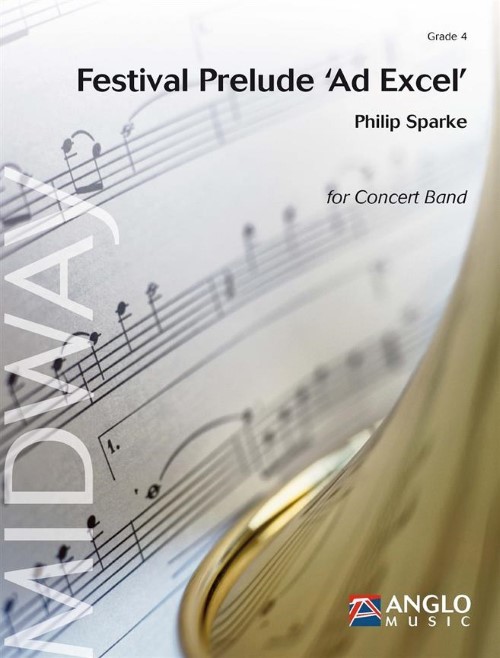 £106.99
£106.99Festival Prelude Ad Excel (Concert Band - Score and Parts) - Sparke, Philip
Festival Prelude 'Ad Excel' was commissioned by the AD Concert Band, from Solihull in the UK, to celebrate their 40th Anniversary in 2016. The title, Ad Excel, is a play on words: it is Latin for 'to excel' but also celebrates the band's anniversary as XL is 40 in Roman numerals. The work opens with a bright fanfare with frequent changes of meter. This leads to a playful main subject, played first by woodwinds, followed by full band. A bridge passage leads to a legato second subject, played twice. The bridge passage returns to introduce the both main melodies in new keys and instrumentations before a coda, derived from the opening fanfare, brings the work to a close. Duration: 5.00
Estimated dispatch 7-14 working days
-
 £225.00
£225.00A John Rutter Christmas IV - Sing-Along (Concert Band - Score and Parts) - Rutter, John - Noble, Paul
After arranging a number of John Rutter's magnificent compositions for Concert/Wind Band, he invited me to create a medley of his most popular Christmas carols for band. I am pleased to present A John Rutter Christmas to the world of band music, with the hope that conductors, players, and audiences alike will enjoy this outstanding music. Somehow, John Rutter's carols shout Christmas without a word being spoken! - Paul Noble
Estimated dispatch 7-14 working days
-
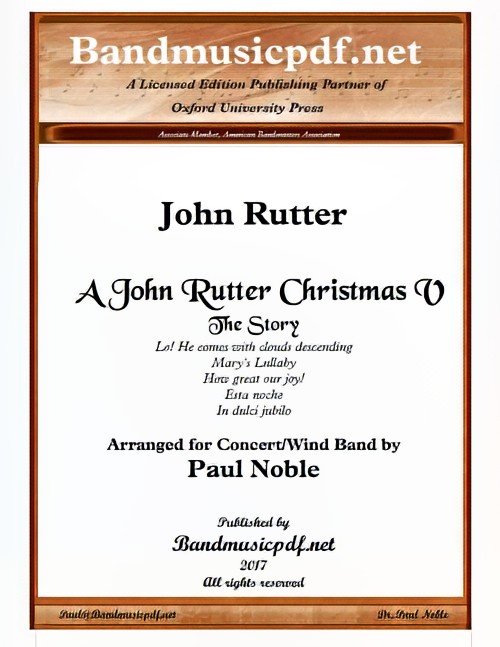 £195.00
£195.00A John Rutter Christmas V - The Story (Concert Band - Score and Parts) - Rutter, John - Noble, Paul
After arranging a number of John Rutter's magnificent compositions for Concert/Wind Band, he invited me to create a medley of his most popular Christmas carols for band. I am pleased to present A John Rutter Christmas to the world of band music, with the hope that conductors, players, and audiences alike will enjoy this outstanding music. Somehow, John Rutter's carols shout Christmas without a word being spoken! - Paul Noble
Estimated dispatch 7-14 working days
-
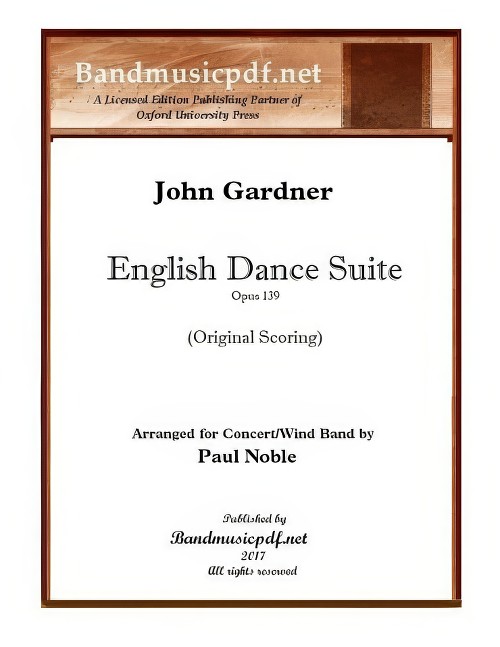 £495.00
£495.00English Dance Suite (Concert Band - Score and Parts) - Gardner, John - Noble, Paul
Original Scoring. Arranged for the modern Concert/Wind Band, scored for three trumpets, reasonable doubling of parts where the original musical effect is not altered so that players can have a more responsible and enjoyable experience, more legible parts with less doubling on one staff, etc. The piece is offered either as a complete suite of seven movements, and also as seven individual movements which may be purchased independently. The English Dance Suite was originally composed by John Gardner for Wind Band, and has been re-set for the modern Concert Band instrumentation. Both the original version, edited and type-set by Paul Noble, and this arrangement are first editions now available for purchase to bands around the world. The set of seven Renaissance dances depict John Gardner's love of Scottish music, the Renaissance heritage, and some of his own mischievous approach to music. The first movement, Chacony on a Golden Theme, reminiscent of the Allegro movement of Purcell's Golden Sonata, is much used as a vehicle for variation on a repeated short harmonic progression, often involving a fairly short repetitive bass-line which offered a compositional outline for variation, decoration, figuration and melodic invention. In this it closely resembles the passacaglia. The Alman originated in the 16th century as a duple metere dance of moderate tempo, already considered very old, with a characteristic double-knocking upbeat of one or occasionally three sixteenth notes. It appears to have derived from a German dance but no identifiable dance and no German dance instructions from this era survive. The Hornpipe, usually in 3/2 dance rhythm, is an Irish, Scottish and English dance. It is done in hard shoes, which are used to help keep track of how the dancer keeps in time. There are two variations of the hornpipe dance: fast and slow. Usually, more experienced dancers will do the slow hornpipe but younger dancers will start out with the fast hornpipe and then switch in later years. The Corranto is a 16th-century court dance characterized by short advances and retreats, in quick triple time. The Volta (Italian: the turn or turning) is an anglicised name from the later Renaissance. Its main figure consisted of a turn and lift in a sort of closed position. The Pavan is a slow processional dance common in Europe during the 16th century. The Reel, indigenous to Scotland, consists largely of quaver (eighth note) movement with an accent on the first and third beats of the bar.
Estimated dispatch 7-14 working days
